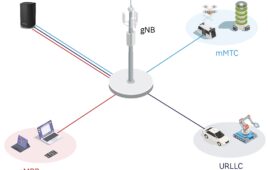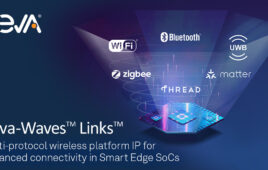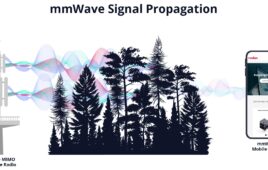AT&T on Monday said it has teamed up with Intel to launch what it believes is the first 5G business customer trial.
The carrier said the trial will utilize millimeter wave (mmWave) technology previously demonstrated in collaboration with Ericsson to power a 5G network experience in one of Intel’s Austin offices.
“This trial is a significant step forward. We’re leaving the lab and heading into the field with a real-world business customer,” AT&T Senior Vice President of Networking Product Management Rick Hubbard said. “We expect mmWave technology to be an important part of 5G. The trial will help accelerate our 5G work by shedding new light on how the technology acts in a business environment.”
AT&T said the trial will provide bandwidth of more than 1 gbps to enable multiple use cases including internet access, VPN, Unified Communications applications, and 4K video streams. The 5G VoIP service will run on the 15 GHz and 28 GHz spectrum bands, AT&T said. Ericsson said the trial will help validate the feasibility of outdoor-to-indoor millimeter wave coverage for business customers.
“From an Intel standpoint we’re obviously very excited about 5G, we have many products in development today and we’re looking for trials we can test this technology in and the best trials are the ones that are actually a real use case,” Rob Topol, Intel’s general manager of 5G business and technology, said Monday.
According to Topol, the goals of the trial with AT&T are twofold: first, to “test the signal strength and integrity of what’s coming in to see if it’s stable and steady, and can it rival what’s being done with a fixed connection,” and second, to test in an environment where there’s different devices hopping on and off the network to see if the system holds up in a real working environment.
AT&T Senior Vice President of Wireless Network Architecture and Design Tom Keathley also noted the trial will provide the carrier with a chance to test 4K HD video streaming across further physical distances between pieces of equipment, and noted speeds “rivaling what we see from cable operators” are expected.
The move to test 5G in a business environment – and the focus on video – comes just after AT&T’s launch of its DirecTV Now mobile video streaming product and amid a rise in mobile video streaming across the industry.
It also comes as wireless carriers are pushing to become the first to deploy next generation 5G services.
Verizon has previously said it plans to launch a fixed wireless 5G pilot in 2017, and rival wireless carriers including Sprint, T-Mobile, U.S. Cellular, and C Spire have all been conducting 5G tests.
Topol said a term for the trial hasn’t yet been determined, but noted Intel has committed to participate for as long as AT&T and Ericsson want to continue. Trials of this kind normally stretch for several weeks or months, he said.
Even if formal results of the trial aren’t announced, Topol said onlookers can watch for subsequent tests to evolve and expand on various elements of the system. Examples include the addition of 5G prototype modems with expanded bandwidth, additional devices to add more network congestion, and longer distances between the base station and the gateway, he said.




